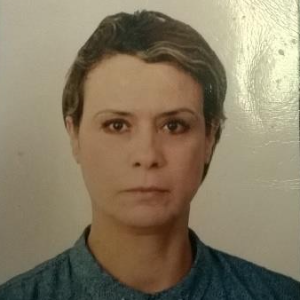Title : CoFe2O4/LaAlO3 heterojunction for efficient photocatalytic hydrogen evolution
Abstract:
Due to its undeniable importance, hydrogen is receiving increasing attention as a clean energy carrier for transportation and stationary energy applications. Over the past few decades, photocatalytic hydrogen production has emerged as a promising approach and has attracted much interest. One of the most promising approaches to avoid charge recombination and extend the light response range of a single photocatalyst is the construction of a heterojunction system. In the present work, the reactivity of the CoFe2O4/LaAlO3 heterojunction system was studied by testing the photocatalytic activity under visible light irradiation. The heterojunction material was prepared via a simple mechanical mixing strategy and characterized using various techniques including: TGA analysis, X-ray diffraction, FTIR spectroscopy, uv-visible microscopy and scanning electron microscopy. The spinel CoFe2O4 spinel and perovskite LaAlO3 materials were previously prepared via nitrate route and sol gel methods respectively.
Photocatalytic tests were carried out in a Pyrex reactor with temperature controlled at 50 ± 1°C by a circulating water bath (Polystat-Fisher). A solution of 100 mg of CoFe2O4/LaAlO3 dispersed in 100 mL of electrolyte solution (0.033 M Na2SO4) was prepared by magnetic stirring to avoid vortex phenomenon. The solution was then subjected to N2 gas bubbles under continuous stirring. For illumination, three LED lamps were used as light source. The volume of H2 generated during the reaction was measured using a water manometer.
The material showed a higher photocatalytic H2 production of 82.6 µmol min-1 under visible light irradiation without any co-catalyst in Na2SO3 solution.
The excellent activity is attributed to the Z-charge transfer pathway between CoFe2O4 and LaAlO3, which effectively limits charge recombination and maintains a higher redox capacity of electrons and holes.
Audience Take Away:
- New research findings, best practices and strategies related to hydrogen production via green process and the principles of photocatalytic process.
- The potential of this approach to reduce greenhouse gas emissions and contribute to a more sustainable energy future.
- The advantages and limitations of using photocatalysis for hydrogen production compared to other methods such as electrolysis and steam methane reformation (industrial process).
- The efficiency of the photocatalytic process, the purity of the hydrogen produced and the possibility of using this process for commercial purposes.
- To offer the attendees valuable information, insights that they could use to enhance their own knowledge, teaching and skills.



